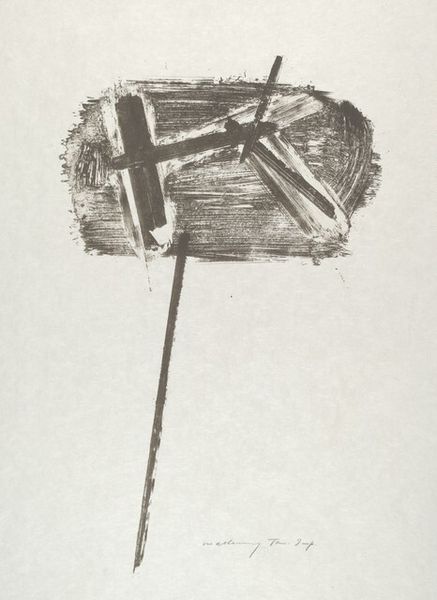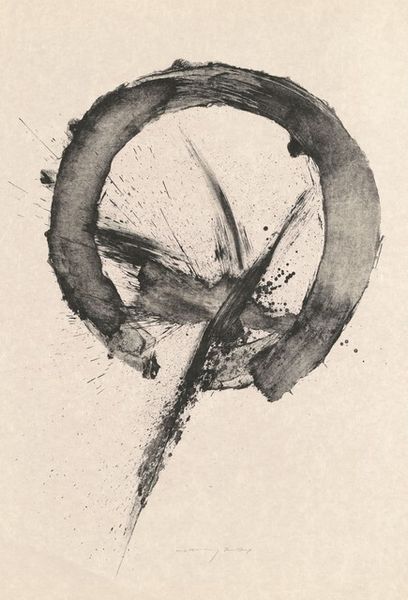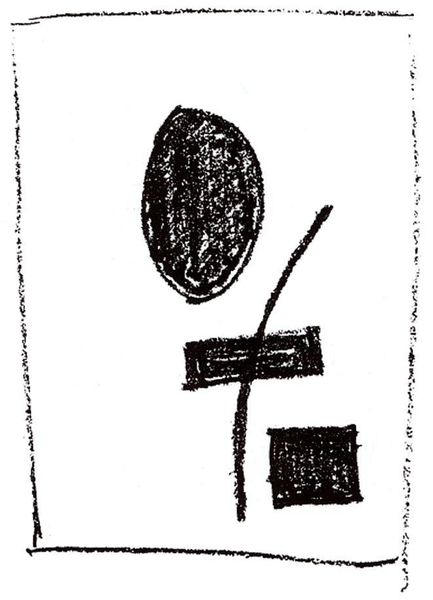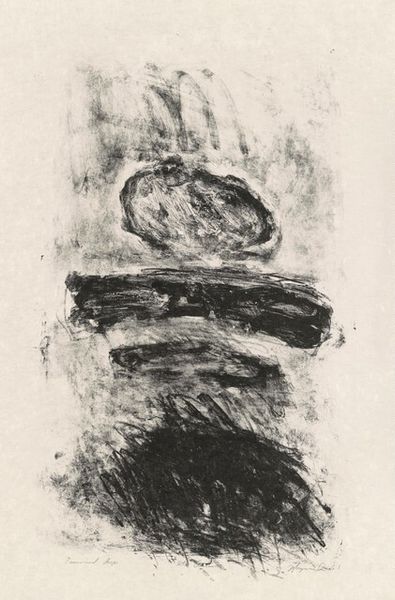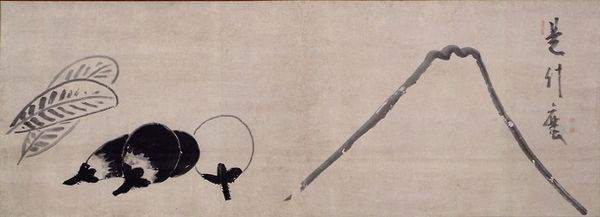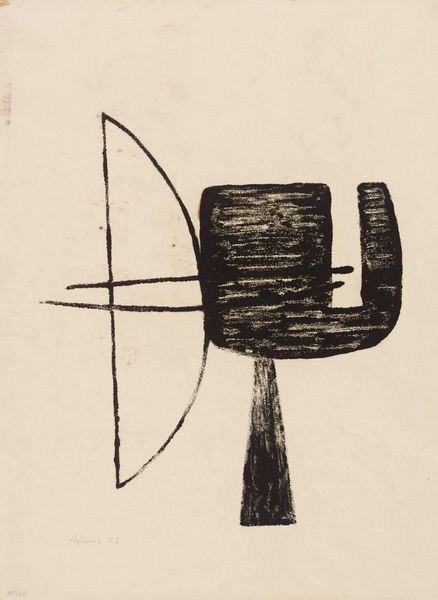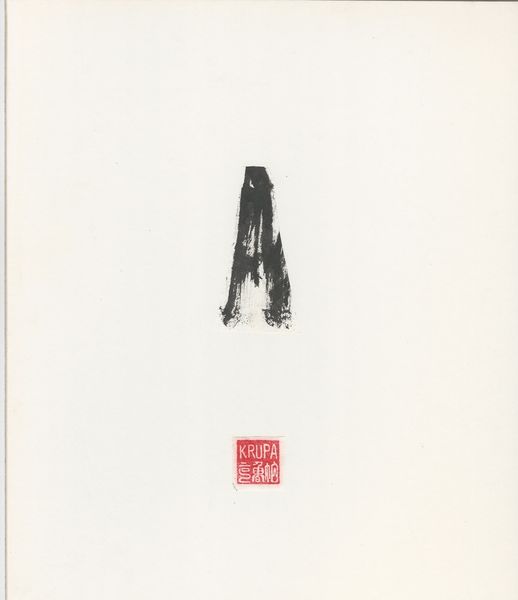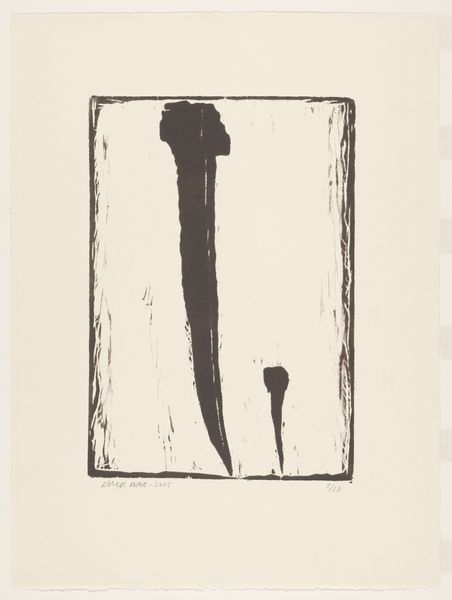
Copyright: National Gallery of Art: CC0 1.0
Editor: So, here we have Robert Mallary's "Calligraphic Drawing" from 1962, made with ink. It’s striking how simple it is, just these two black shapes on a white background. I’m initially drawn to the contrast between the broad, almost smudged rectangle at the top, and the more defined lines below. How do you interpret this work purely through its formal elements? Curator: Precisely. Disregarding any external narrative, focus on the interplay of form and line. Notice the textured quality of the upper rectangle; it is not a solid mass but an accumulation of strokes, inviting the eye to move horizontally across its surface. Below, we observe a linear form – a vertical stroke bisected by a shorter horizontal one. Consider the relationship between these forms: how do their varying textures and directional orientations affect the overall composition? Does the stark contrast enhance or diminish its visual impact, in your view? Editor: I think the contrast is key. The roughness of the rectangle against the comparative smoothness of the line makes the line seem almost delicate. It also creates a kind of tension, as if the line is somehow supporting the weight of the rectangle, even though visually there's a lot of empty space. Curator: An astute observation. Moreover, consider the use of negative space. It is not merely an absence, but an active component shaping our perception of the forms themselves. Note how the ample surrounding space isolates the marks. Does this isolation imbue the marks with greater significance? And what might the artist achieve by confining their palette solely to monochrome? Editor: I think that limiting the colors makes us pay more attention to the forms. The monochrome emphasizes texture and shape, and makes the entire image more focused and concise, like a visual poem perhaps. Curator: A fitting analogy. The interplay of positive and negative space, the variance in line quality, and the monochrome palette all contribute to a purified visual experience. Mallary encourages us to contemplate the fundamental language of form and its expressive potential. Editor: It's amazing how much can be communicated through so little. This analysis has given me a completely new way to see abstract art.
Comments
No comments
Be the first to comment and join the conversation on the ultimate creative platform.
